|
Here is the heat shield on the Apollo spacecraft which
is made from
brazed stainless steel honeycomb coated with phenolic epoxy resin. This
heat shield was also ablative and from the ground it would look as if it had
caught on fire during its descent. In reality the ablative covering is
what kept the astronauts inside safe because the material diverted heat
away as it vaporized. This heat shield is over 12
feet in diameter and without it the astronauts would not have survived
reentry into the Earth's atmosphere. The atmosphere acted
like a braking system on the spacecraft. To further slow the their
descent, the spacecraft used mortar deployed parachutes. The Apollo
spacecraft had three large parachutes and could safely land with only
two. The top of the spacecraft housed several balloons and air
compressors. If the ship landed upside down in the ocean, the astronauts
could activate the balloons in an attempt to turn the spacecraft
upright.
|
|
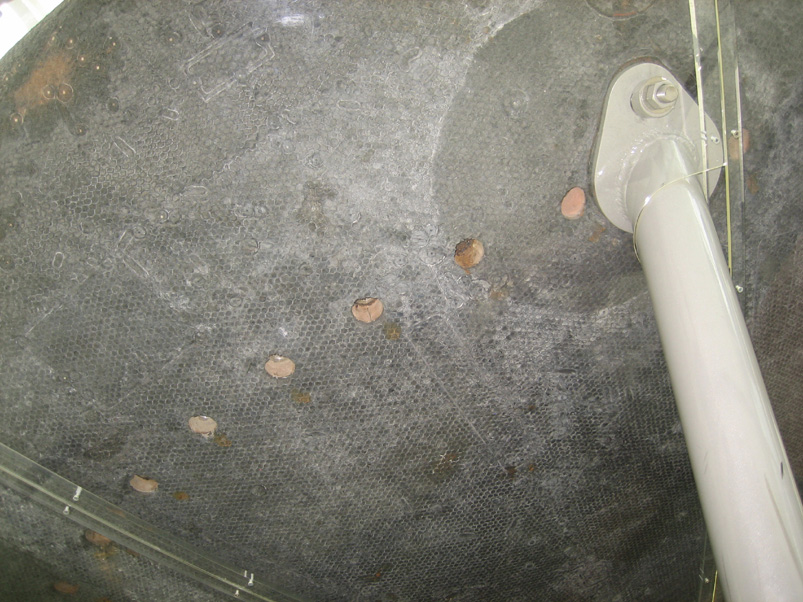 |
Click for a larger image.
|
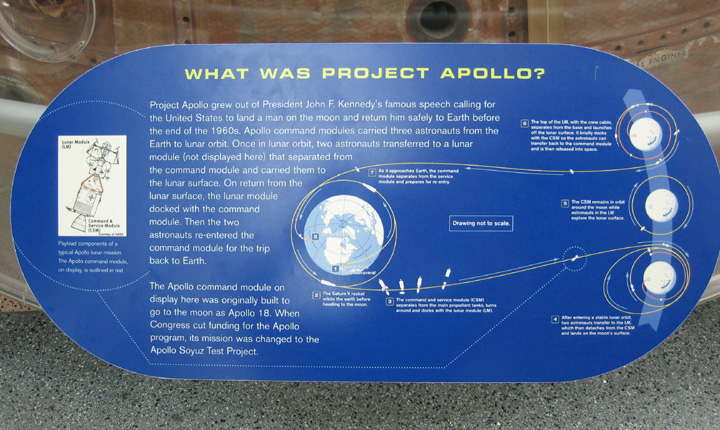 |
|
This space suit went to the moon and back on Apollo 16.
The basic Apollo space suit, which was worn during liftoff was the
backup suit needed in case cabin pressure failed.
The Apollo suit consisted of the following: 1) A
water-cooled nylon undergarment. 2) A multi-layered pressure suit:
inside layer is lightweight nylon with fabric vents; middle layer is
neoprene coated nylon to hold pressure; outer layer is nylon to restrain
the pressurized layers beneath. 3) Five layers of aluminized Mylar
interwoven with four layers of Dacron for heat protection. 4) Two layers
of Kapton (Kapton is a polyimide film developed by DuPont that remains
stable across a wide range of temperatures, from −452 +752 °F) for
additional heat protection. 5) A layer of Teflon-coated cloth
(nonflammable) for protection from scrapes. 6) A layer of white Teflon
nonflammable cloth. The suit had boots, gloves, a communications cap and
a clear plastic helmet. During liftoff the suit's oxygen and cooling
water were supplied by the ship.
For walking on the moon the space suit was supplemented
with a pair of protective overboots, gloves with rubber fingertips, a
set of filters/visors worn over the helmet for protection from sunlight,
a portable life support backpack that contained oxygen, carbon-dioxide
removal equipment and cooling water. The space suit and backpack weighed
180 pounds on Earth, but only 30 pounds on the moon.
|
|
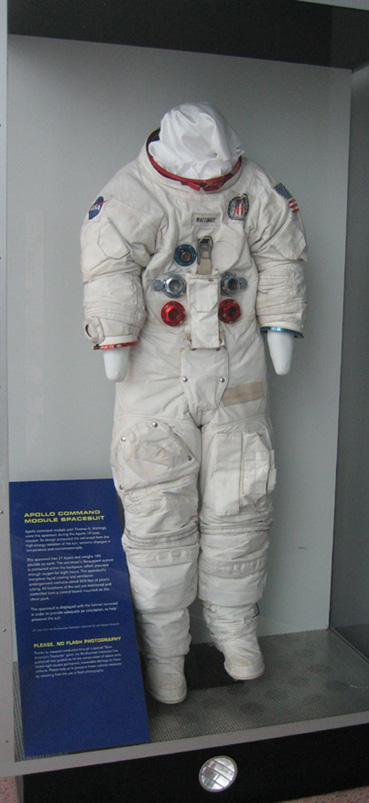 |
|
I wasn't reading all the display signs while I was walking around that
day but was going to once I got back home. Read what you're not suppose
to do at the bottom....oops!!
Click for a larger image.
|
|
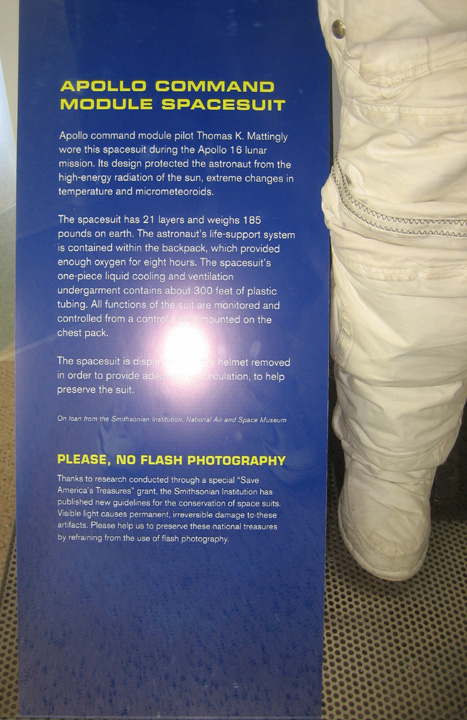 |
|
This is a space suit from project Mercury made by the
B.F. Goodrich Company in 1960 for testing and training. This
suit only weighed 20 pounds which was a modified pressurized NAVY flight
suit made of rubber and nylon. Unlike Gemini, Apollo and Shuttle space
suits, the Mercury suit was not designed for use outside the spacecraft
but would protect them if the capsule lost pressure.
|
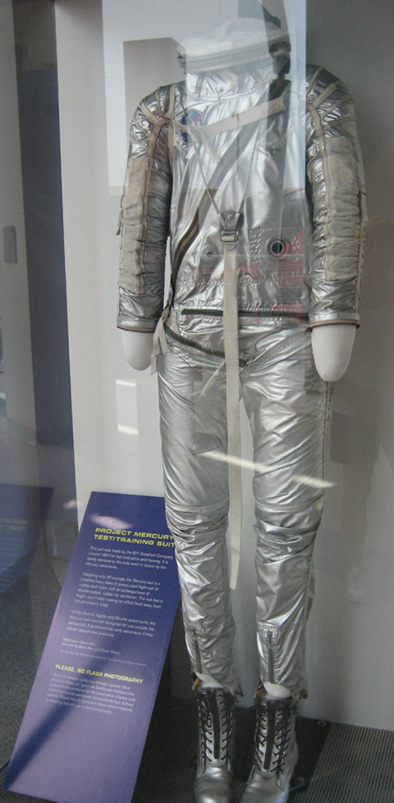
|
|
This is a full scaled version of the Viking Lander that
went to Mars. The name Viking comes from the fearless Nordic explorers of Earth.
Throughout history, no other planet in our solar system has captured
human imagination like the red planet. For centuries, scientists
wondered if Mars might be covered with vegetation or even inhabited by
intelligent beings.
Today we know Mars to be quite different. It is a frozen desert world
with towering volcanoes, now silent and deep canyons. Polar ice caps
expand and contract with the Martian seasons. Evidence of ancient rivers
and vast oceans indicate a warmer, wetter past.
|
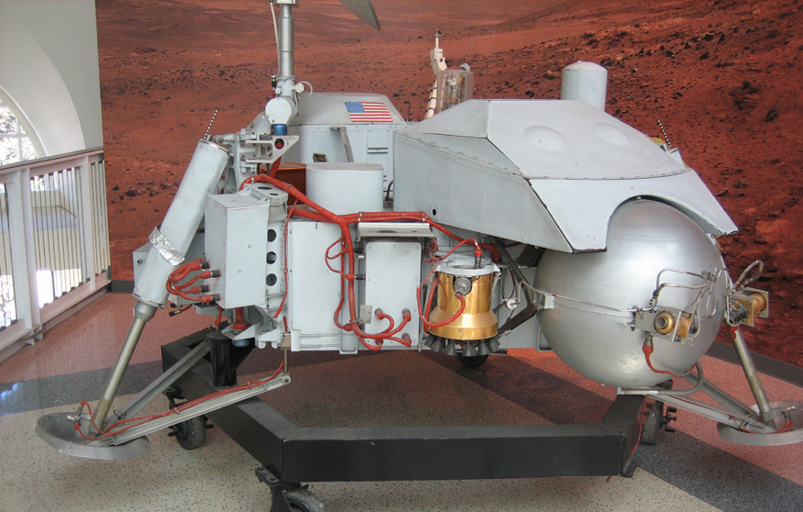
|
|
Much of what we now know is due to the extraordinary
efforts of a group of NASA scientists, engineers and technicians who
came together in the 1970s and created an robotic mission they called
Viking. There were two nearly identical Viking spacecrafts built called
Viking 1 and 2.
|
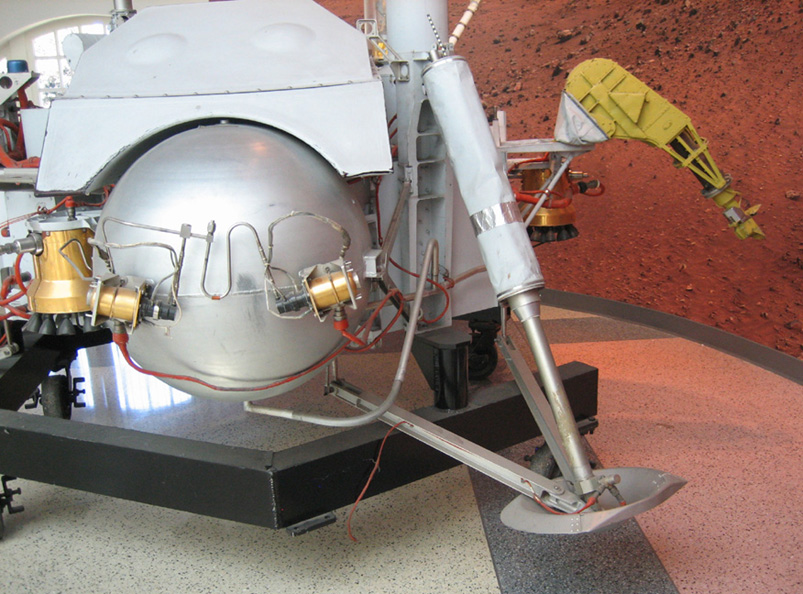
|
Click for larger image.
|
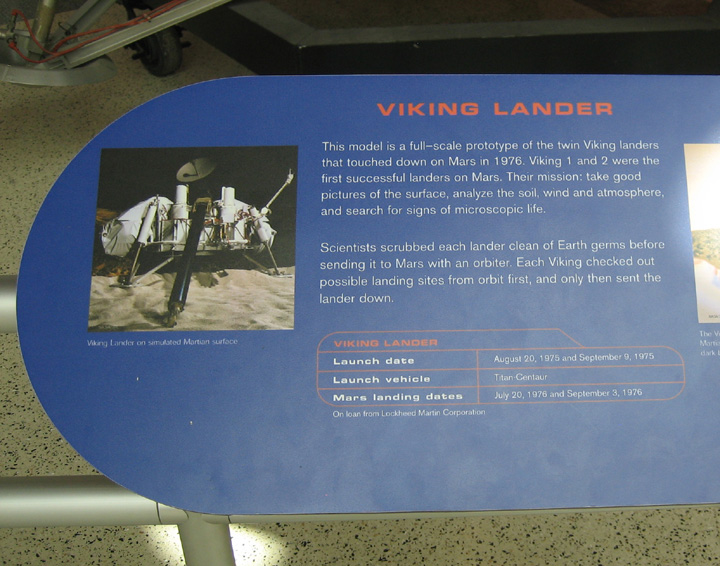 |
|
This is a 1/5 scaled down version of the Hubble space
telescope. The real Hubble is 43.5 feet long, 14 feet in diameter and
weighs 24,500 pounds. The Hubble Space Telescope goes around Earth at a
speed of 5 miles per second at an altitude of 350 miles, completes one
orbit in 97 minutes at a speed of 17,500 mph.
|
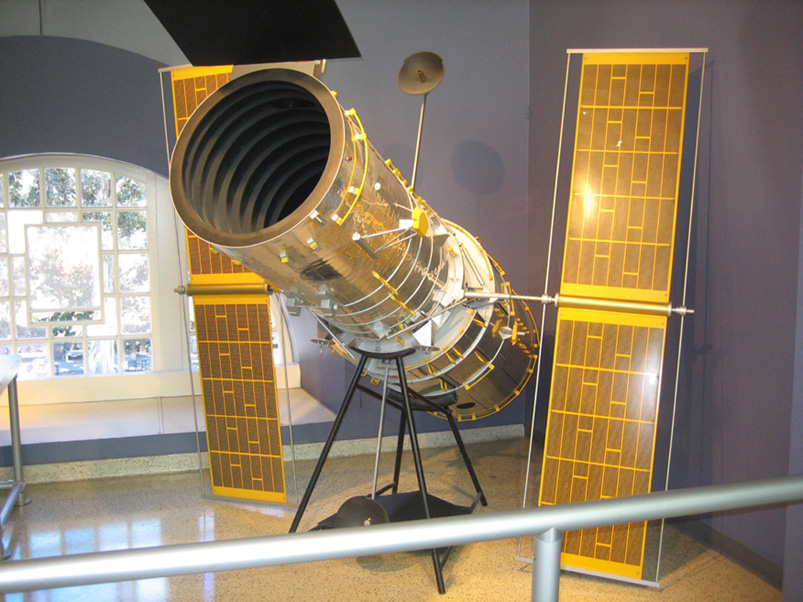 |
|
1
2
3
4
5
6
7
8
9
10
11
12 |